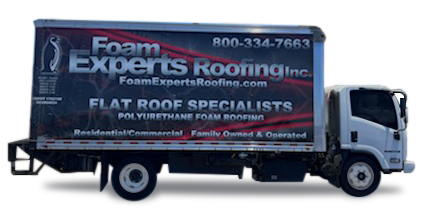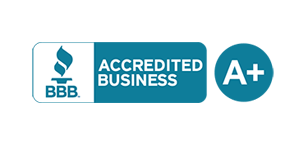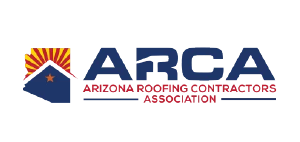Commercial buildings often choose flat roofs for good reasons. Flat commercial roofs are cheaper and more practical than pitched roofs. Even though they’re not perfectly flat, they have a slight slope for water to run off.
Flat roofs are great for big buildings because they’re easier and safer to install. They also make the most of space for big equipment like HVAC units. Plus, they look simple and don’t need fancy gutters.
Some materials used for flat roofs can last up to 50 years. Getting expert advice is key to picking the right flat roof for your project. It ensures it fits your needs and budget.
Key Takeaways
- Commercial roofing advantages include cost-effectiveness and practicality.
- Flat roofs have a slight slope for effective drainage.
- Flat commercial roofs simplify installation and maintenance for large buildings.
- These roofs allow for optimal space utilization, especially for HVAC systems.
- Energy-efficient materials can be used, reducing overall energy costs.
- Flat roofs can offer durability, with service lives extending up to 50 years.
Introduction to Flat Roofs for Commercial Buildings
Flat roofs are common in modern commercial and industrial buildings. They are practical and cost-effective. These roofs are great for large buildings because they are easy to maintain and use space well.
Understanding Flat Roofs
Flat roofs aren’t really flat. They have a slight slope to help water run off. This design uses less material and is simpler, making it cheaper but still functional. They’re perfect for buildings that need extra space for equipment or utilities.
Brief Historical Context
Flat roofs have been around since ancient times, especially in dry climates. They became popular in commercial buildings in the early 1900s with new materials and building methods. Now, they’re a key part of commercial and industrial designs, offering practical and affordable roofing options.
Cost-Effectiveness of Flat Roofs
Flat roofs are becoming more popular in commercial buildings because they save money. They are affordable and practical, offering many financial benefits to businesses.
Lower Upfront Costs
Flat roofs cost less to start with. They need fewer materials and are easier to install, which lowers labor costs. This makes them a great choice for businesses wanting to save on roofing costs.
Long-Term Savings
Flat roofs can save a lot of money over time. Using materials that reflect sunlight can cut down on air conditioning costs. Plus, they can have rooftop gardens, which improve insulation and are more eco-friendly. These savings make flat roofs a smart choice for commercial buildings.
Ease of Installation and Maintenance
Flat roofs are easier to install for commercial buildings. They need fewer materials and have a simpler structure. This makes the installation faster and cheaper.
Faster Installation Time
Flat roofs are installed quickly. Their simple design makes the process faster than sloped roofs. This saves businesses time and lets contractors finish projects sooner.
Simplified Maintenance
Flat roofs are easy to maintain. They offer safe, easy-to-reach areas for inspections and repairs. This makes maintenance work quicker and cheaper.
Flat roofs are also easy to spot problems like leaks. This helps keep the roof reliable and working well over time.
Space Utilization for Equipment Storage
Flat roofs in commercial buildings are great for storing essential equipment. They use rooftop space for things like HVAC systems. This makes the most of areas that would otherwise go unused.
HVAC and Other Systems
Putting HVAC systems on flat commercial rooftops frees up indoor space. This lets businesses use their ground space better. It keeps work areas clean and free from clutter.
Accessibility for Maintenance
Flat roofs make it easy and safe to access equipment for maintenance. This makes upkeep quick and doesn’t disrupt daily activities. It ensures that maintenance can be done without hassle.
Environmental and Energy Efficiency Benefits
Flat roofs are great for commercial buildings because they save energy and are good for the environment. They use new roofing ideas that save money and help the planet.
Reflective Roofing Materials
Flat roofs can use special materials that reflect sunlight. This keeps buildings cooler, which means less need for air conditioning. It also cuts down on energy use.
Green Roofs
Flat roofs can also become green roofs. These roofs have plants and materials that soak up sunlight and rain. They keep buildings cool, stop leaks, and help the air and plants in cities.
Solar Panel Installation
Flat roofs are perfect for solar panels. They get the most sunlight, making solar energy more efficient. Solar panels on roofs make clean energy, saving money and reducing pollution.
In short, using reflective materials, green roofs, and solar panels on commercial roofs is smart. They save energy, help the environment, and cut costs in the long run.
Drainage Solutions for Flat Roofs
Effective drainage is key for flat roofs, especially in big commercial buildings. Flat roof drainage systems handle lots of water well. They use interior pipes and special features to move rainwater away.
This stops water from building up on the roof. It also lowers the chance of overflow or damage to the roof.
Using strong flat roof drainage systems is crucial for managing water on commercial roofs. The right systems keep the roof safe from leaks and water damage. Solutions like scuppers, internal drains, and tapered insulation help move water off the roof.
These features keep the building’s structure safe. By having good roof drainage, buildings can stay safe and their roofs last longer. Choosing the right drainage systems makes the roof more durable and useful.
Why do commercial buildings use flat roofs?
Flat roofs are popular in commercial buildings for good reasons. They offer practical commercial roofing choices. These roofs are perfect for HVAC systems, making upkeep easier and quicker. This boosts the building’s efficiency.
Flat roofs also have big structural benefits. They make adding insulation layers simple, which saves energy. Plus, their design is straightforward, cutting down on construction costs. This means flat roof advantages in both upfront and long-term savings.
Flat roofs also save space for storing important equipment. This is key for commercial buildings where space is precious. Additionally, they’re great for solar panels and reflective materials. This helps lower energy costs and is better for the environment.
In summary, flat roofs are chosen for their cost savings, practicality, and design. They’re a top pick for today’s commercial buildings.
Conclusion
After discussing flat roofs for commercial buildings, it’s clear they have many benefits. Their cost-effectiveness is a big plus. They have lower upfront costs and simple materials, leading to long-term savings.
Flat roofs are also easy to install and maintain. This means less downtime for businesses. They also provide space for important equipment like HVAC systems, making maintenance easier.
Environmental benefits and energy efficiency are key too. Reflective materials cut cooling costs, green roofs are sustainable, and solar panels use smart energy. Good drainage solutions keep them working well in bad weather.
In summary, flat roofs offer many benefits. They save money, are easy to use, and good for the environment. Businesses should talk to roofing experts to find the best fit for their needs and budget. Choosing a flat roof is a smart move for commercial properties in the U.S.















